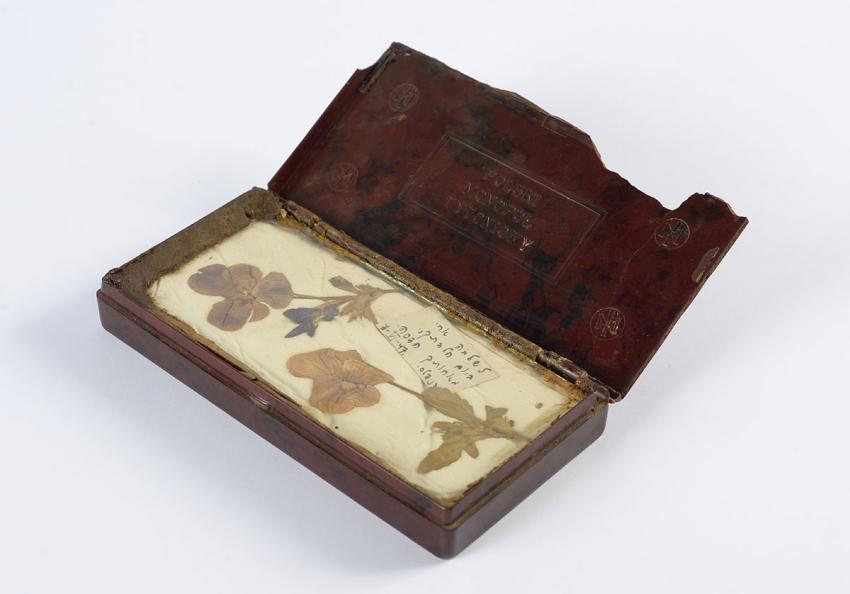Sixteen-year-old Shlomo Hochman from Krzeczów, Poland received the gift from Hadassah Rosen from Ciechanowiec, Poland, on the deck of the "Exodus". Shlomo and Hadassah were both the sole survivors of their respective families.
After the war, the US Army took over a hotel in the town of Lindenfels in southwest Germany, and turned it into a children's home. Shlomo and Hadassah's friendship dated back to their time together at the home in Lindenfels.
Shlomo's parents, Yehoshua ("Shia") and Shoshana, were murdered in an Aktion in Krzeczów in August 1942. Shlomo, the youngest of six, was the only member of his family to survive the Shoah.
During the Aktion in which his parents were murdered, Shlomo fled to the forest together with two of his older brothers, where they built an underground hiding place. Armed Poles murdered one of his brothers, and Shlomo remained in hiding with his other brother, first there and then in the fields. They found work with a farmer and stayed with him until Poland was liberated.
After liberation, Shlomo's second brother was murdered by Ukranians. Shlomo escaped to Chorzow, where he lived in by a children's home. Three months later, he joined the children's kibbutz of "Hashomer Hatzair", and went with them to Germany, where he lived in the children's home in Lindenfels and met Hadassah. In July 1947, Shlomo boarded the Exodus ship. He reached Eretz Israel (Mandatory Palestine) and joined Kibbutz Bar'am in the northern Galilee.
In 1955, Shlomo submitted Pages of Testimony in memory of his parents Yehoshua ("Shia") and Shoshana, his older brothers Moshe, Shimon and Chaim, and his sisters Shaina-Sheindel and Zvia.
Hadassah was born in Ciechanowiec, Poland, but on the eve of World War II, she lived with her family in Podbrodzie (today Pabradė, Lithuania). When the Germans invaded in June 1941, they murdered many of the town's Jews, and then established a ghetto there. In September, the Germans murdered the remaining Jews. During the killings, Hadassah hid in the attic of the Beit Midrash into which the Jews were crammed before their murder. The Germans discovered her hiding place and stood her in front of a firing squad. She was shot, but survived and ran away. After wandering alone, she reached the Kiemieliszki ghetto.
In October 1942, this ghetto was also liquidated. Hadassah managed to escape while the Germans were leading the ghetto's Jews to the killing site. She hid her Jewish origins and kept moving from place to place, occasionally finding work on farms. When the area was liberated by the Red Army, she was living in a Jewish orphanage in Vilna, and then returned to Poland. In Lodz, Hadassah joined "Hashomer Hatzair". Her group travelled to Germany and she reached the children's home in Lindenfels. In July 1947, Hadassah boarded the Exodus. In 1948, she arrived in Eretz Israel and on 5 May, she reached Kibbutz Evron, where she made her home.
Hadassah married Aryeh Shapira, whom she also met in the home in Lindenfels, and who was also on the Exodus.
In 1968, Hadassah submitted Pages of Testimony in memory of her father, Mordechai-Moshe, her mother Nechama, her sister Zvia and other relatives.
Yad Vashem Artifacts Collection
Donated by Dr. Avi Shapira, Zikhron Ya'akov, Israel







